Something You Need To Know About Tattoo Color

Tattoos now come in a myriad of different styles, with an infinite number of designs and a wide variety of colors. In this blog, we will cover the best colors for tattoos, tattoo ink choice and how to make your colors look longer lasting.
What are the best colors for tattoos?
Choosing the color for your tattoo is an important part of the tattoo design process. The color can change the overall effect of the inking and can help it come to life or replicate the original image.
Several tattoo styles tend to favor brightly colored pieces. One of them, watercolor tattoos, relies heavily on color to complete the piece.
If you want a tattoo with intricate patterns and sharp contrasts, black and gray are a better color story for you. Realism, portrait, tribal and black tattoo styles prove that monochrome tattoos are also great. Black and gray tattoos are created by using black ink mixed with water to create lighter and darker shades of ink. This technique is used to create light and shadow effects that give dimension and movement to your tattoo.
What color tattoos last longer?
Black and gray are the longest lasting colored tattoos. These darker shades are dense and eye-catching and do not fade easily.
Vibrant and muted colors such as pinks, yellows, light blues and greens tend to fade more quickly.
The shades commonly used in watercolors are very ephemeral. Although very popular, this style of tattooing requires frequent retouching.

The best areas for colored tattoos
How long a colored tattoo stays on may depend on the area you are tattooing. This is because certain body parts are more susceptible to age and secondary changes in weight.
The following are some of the best areas to get a long-lasting colored tattoo.
- Upper chest or collarbone. This area is usually covered by clothing, so it is not damaged by direct sunlight. It is also an area that is less likely to stretch as you age, especially the collarbone, making the tattoo design long-lasting and durable.
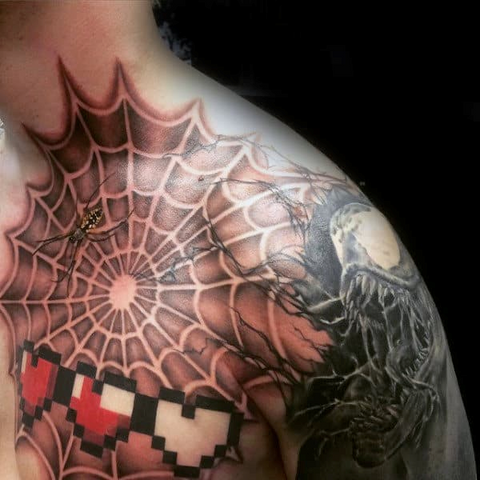
- Inner Arms. The inner arm is a better area for colored tattoos than the outer arm. It is exposed to much less sunlight and the softer skin is usually less damaged than the more muscular outer layer.
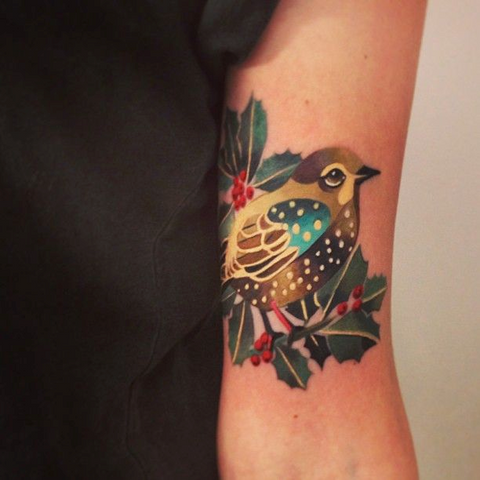
- Back. It is a relatively hidden area, so it is not generally exposed to UV light. The larger, flatter space allows you to play with larger, bolder tattoo designs. The back also doesn't stretch as much as the abdomen when your weight fluctuates, ensuring your tattoo color doesn't distort over time.
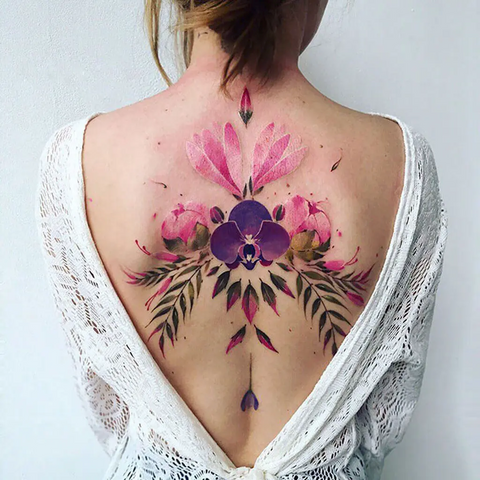
- Shoulders and calves. These areas of the body are not affected by aging, which means the color will stay brighter and fresher for longer. Due to the sensitivity of the skin, these areas may be more painful to tattoo, but the flat areas will allow your artist to create large, detailed designs.
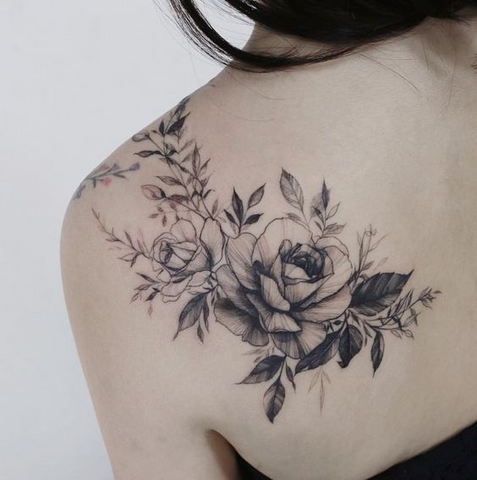
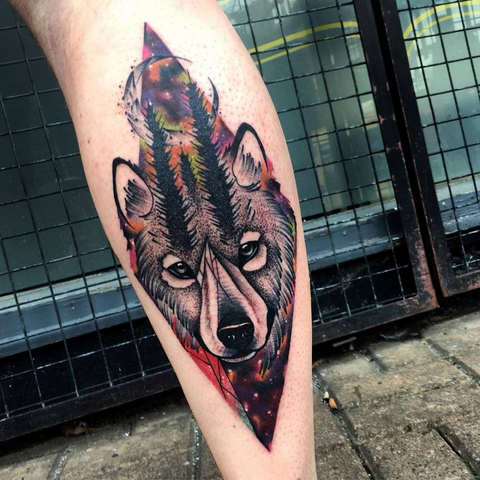
Pros and Cons of Tattoo Colors
- Black and gray are the most common colors used in tattoos. They suit all skin tones, from light to dark. Because black is a long-lasting shade, it is used for line work. When executed in black and gray.
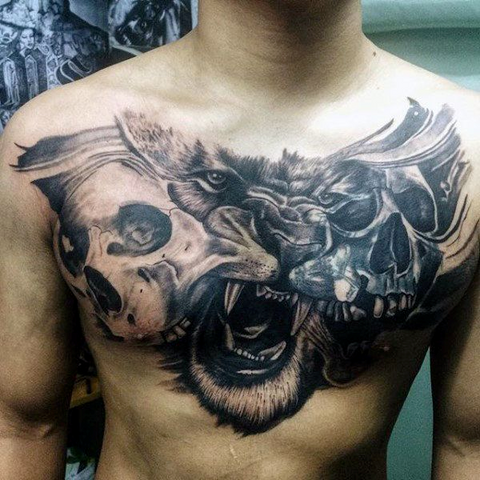
- Red tattoos tend to fade over time, not as much as black, but better than other vibrant shades. This is because many people are allergic to red ink, although advances in ink have minimized this. If you are concerned, we recommend having a tattoo artist do a red ink spot on your foot before starting the tattoo.
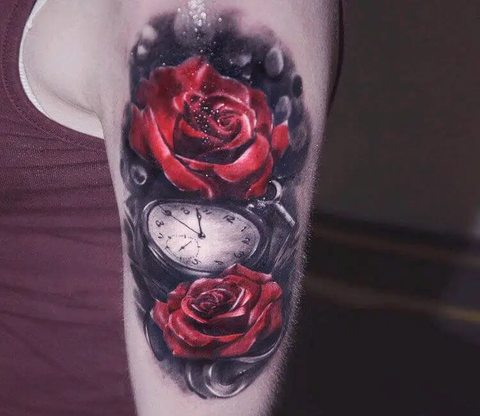
- Yellow and orange fade quickly on pale skin and can be difficult to see on darker skin. Yellow ink is usually the first color to fade on a tattoo. If your base color is yellow, avoid using this color as it looks muddy on the skin. Avoid using these shades as highlighting or additional finishing touches.
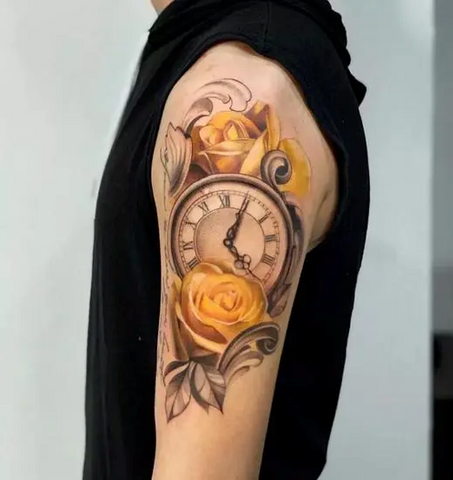
- When it comes to tattoos, blue ink is a much longer lasting pigment. This shade is suitable for all skin tones. The lighter the color, the faster it will darken and fade.
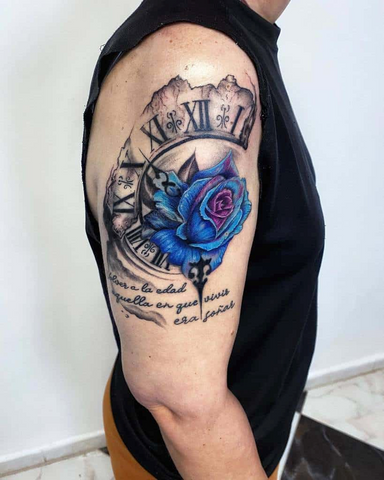
- Over time, purple quickly loses its intensity. The lighter the purple, the more likely it is to fade. Darker purple shades will last longer and look especially good on darker, warmer skin tones.
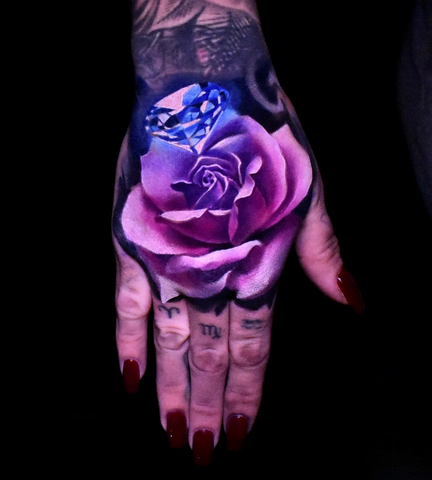
- White ink tattoos are becoming increasingly popular because of their subtle and delicate nature. More difficult to detect than other colors, they fade much more quickly than any other color. White ink lasts longer on pale skin compared to darker skin tones

How can I prevent tattoo colors from fading?
There are many reasons why tattoo colors can fade. It is important to choose a professional tattoo artist who is experienced and knows how to use the color, which means it is less likely to fade over time.
To ensure that your tattoo color stays as good as new for a long time, be sure to apply sunscreen. UV damage usually produces dense collagen and patchy hyperpigmentation. This will result in poorer quality skin and will not absorb or retain tattoo pigment. Keep the tattoo area moist to ensure it lasts longer and brighter. Use unscented moisturizers and soaps, as they are gentler on the skin.
Up. If you are not satisfied with the appearance of your tattoo color, have a professional tattoo artist retouch it to give it a fresh look. A good artist will make your tattoo bright and vibrant again.
How do I look after my new color tattoo?
Caring for your new color tattoo is an important step in making sure it stays looking better for longer. Here are some of our tips.
- When you remove the covering from your new tattoo, gently wash the area with warm water and mild soap. Sprinkle with water and pat dry.
- Use an antibacterial ointment for the first few days. Your tattoo artist can recommend one. Use until the scab disappears and the tattoo heals. Always apply the ointment and never wipe.
- Avoid direct sunlight and do not soak the area until it has healed.
- No matter how itchy the tattoo is, do not scratch it. Avoid touching the area if possible.
- Avoid drinking alcohol the day before and a few days after the tattoo.
- Avoid wearing tight clothing, going to the gym and swimming until the tattoo has healed.

